Anima interview with Limpe Fuchs
Limpe Fuchs is a legendary experimental musician born in 1941. After studying piano and violin in the early sixties, she started Anima project with sculptor Paul Fuchs. Limpe is a true sound researcher and musically active to this day. She produced countless of interesting recordings with the use and understanding of unusual, mostly self-made instruments. Anima recorded quite a lot of material and after splitting up in the late 1980s she continued to experiment with sounds. A true legend of improvisation.
To begin with, when and where were you born? Music was big part of your life from the very beginning. You had your first piano lessons when you were very young. Was piano your first interest?
No, before I played short waves with the radio button. They produced very interesting noises to me – despite of my father, who only wanted to listen to the news. I sang in the church choir (being born catholic in Munich in November 1941). The first five years I stayed with my mother and brother outside of Munich, because of bombing, and was listening to her zither playing and singing. She was born in Innsbruck. We lived above a blacksmith workshop. I remember very well the dingidingi of the hammer on the anvil – perhaps this love of fire and anvil brought me close to Paul (Fuchs), who learned blacksmithing before he went to the art academy.
What were your first musical involvements?
The organ player wanted to study songs with my mother, and so we rented a piano. When I first opened it and saw many keys and when I touched them, I realized, that one had to learn to play! And so I started to have piano lessons. I liked rhythmic composers like Béla Bartók and further on the very complex harmonies of Johann Sebastian Bach. The first drumming I heard was when I was six year old in my first class at school. We were assembled in the school yard and I thought something like fire alarm exercise was done…From far away I heard a deep bom bom bom bom and there came marching band and a group of dancers and on top of it was the big drum.
Who were your major influences?
When I started studies at the Munich conservatory I found a note on a billboard: “wanted: a drummer for female pop group”. I bought a snare, and went to the place. They covered mostly the Beatles and I bought a drum set and toured with them for three years. My driver was Paul (Fuchs) and in the song “Yellow Submarine” he blew his newly built horn when the band begun to play. In 1960, in my last school year we visited the newly built Siemens electronic studio and I was very excited hearing all this special sounds. With Paul we went to every new music concert in Munich. Mauricio Kagel was very impressive to me, especially the combination of music and performance, not only serious musicians looking to their scores during playing. Later on John Cage, the sound scape artists and experimental 16 mm films, the Viennese artists, Andy Warhol and many others.
“Sound and movement are the main principles of my work.”
Where did you meet Paul (Fuchs) and how would you elaborate the concept and formation of Anima?
I met him in a very special religious group, because I found ‘normal’ Catholicism very hollow. There were also protestants, jews, and atheists. Celebrations there were consisting of special dances, texts from old and new testament, and eating together also in a special house on a Bavarian lake. With part of this group we bought our house and workshop in Peterskirchen and there we practiced meditation of clapping two stones together. We knew the rhythmic noise…when it was too much, too less or just right. Paul found many blowing instruments and for me we made bronze drums, tube drums…I used a kettledrum to which Paul made a foot pedal. Because I am the studied musician, I did the household, the children, the sheep and Paul worked in the metal workshop. Together we had the ideas, but the building was Paul’s job. Later, when we played and he remained in Italy, I rented the workshop of Bernward Munz and he building instruments, when I had new ideas. For example I tried hard wood pieces – they were meant to be burnt in the stove, but while piling them up, I realized that they had different tones and I formed scales with them. With a group of four we worked for several years on the project “holz hören” = listening to the wood pieces. 12 m² of wood pieces on the floor, we made different noises, walked, jumped on them, threw them etc. We also worked with the sounds of different cloths and paper. And in concerts I roll a heavy wooden ball – I found it in the attic of the main building. It may be 500 years old. While I played viola, the moving sound sounds very interesting. Sound and movement are the main principles of my work. This is also documented in the brochure of my exhibition 2017 in Traunstein.
We started our music project in 1968 when a friend visited us. I was exercising on four kettledrums, hired from the conservatory and Paul blew his horn on the other end of the atelier. Our friend said: “Come to our first festival and play this music” and we were very astonished. But I took the kettledrums, Paul took his horn and we went to Munich to play our first concert! What name should the band have? I was fond of “Mystic Power” but not successful. In this time Paul was very fond of the Swiss psychologist C.G. Jung and his Anima – Animus theory, and because he thought of me to be his Anima, he choose the name.
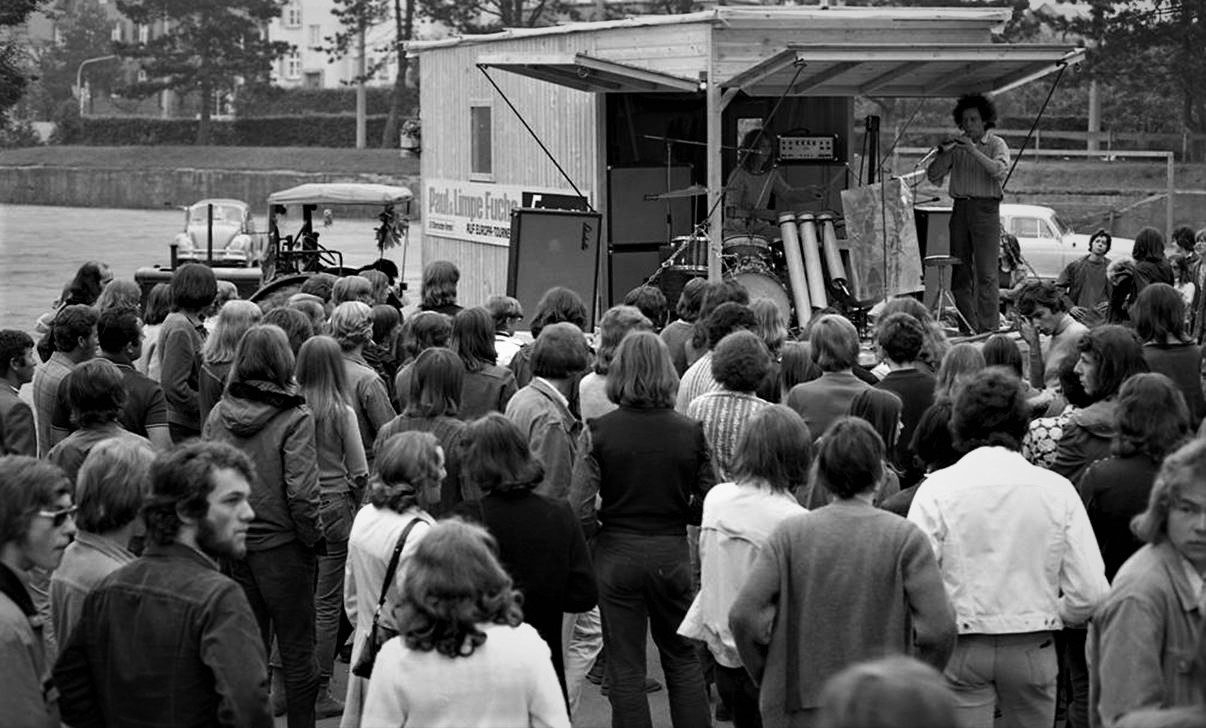
What was the first instrument you build?
I had ideas and Paul built it, when it was technically necessary. I find sounds, tapping on stones, throwing wood pieces and I am a skillful studied drummer. And since a very long time now I am also exercising the viola every day. I showed Bernward how to build the pendulum strings, because Paul kept all for himself after we split.
Does traditional instruments have its limitation compared to the instruments made by you and Paul (Fuchs)?
They are just different. When I play the viola, I mostly strike before a pendulum string and this lasting drone, especially when it hits the crystal, lying in his way, I know what to play with this sound. The Serpentinit stones I collect from the quarry in Val Malenco (Italy)…I arrange them lengthwise, because they have to lay on the quarter points to have the best sound effect. So I get ‘melodies’…the scales are various and I like best the interferences that occur when two stones have nearly the same tone. The stands are built by Bernward Munz after my drawings.
How did you decide to use the name ‘Anima’?
Paul was very fond of the Swiss psychologist C.G. Jung and his Anima – Animus theory. I liked better ‘Mystic Power’.
“Sometimes people got really angry and shouted on us – because we were playing our “experimental sound” in beat clubs.”
What did you think of the finished album at the time?
It was “Stürmischer Himmel” a friend from San Francisco had the idea for the name: “A nice word for English speakers” he said! I hated the cover – both sides. But I was not successful to propose to use only a map of the stars.
At this time we were already very fond of soundscape artists like Raymond Murray Schafer and mixed to the recordings live sounds like the fish seller, our sheep voices, the garbage truck. We had only live recordings and in between we put the other sounds. There are also sounds from listener’s instruments. Back then when we played in clubs, it was always welcomed to bring your own instrument with. And sometimes people got really angry and shouted on us – because we were playing our “experimental sound” in beat clubs.
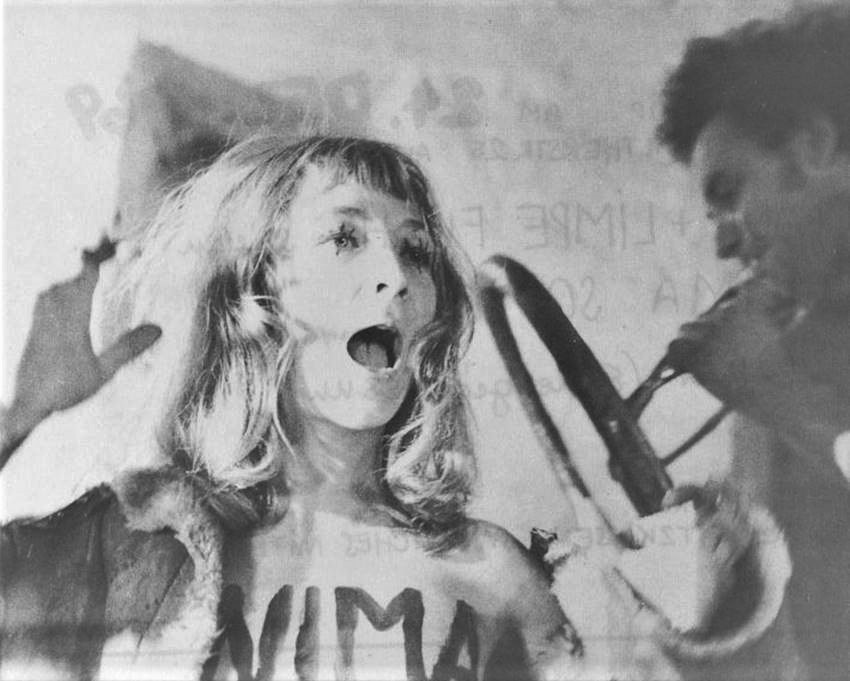
Stürmischer Himmel followed. The latter has more pastoral atmosphere to it compared to Anima Sound. Where did you record these two albums and what are some of the strongest memories from recording it? What kind of techniques and instruments did you use?
Paul blew his Fuchshorn and the “Schilfzinken” he had carved out of elder wood with a bassoon mouthpiece and he had metal sheets with contact mics – one was a silver sheet and the sound, when he shuttled it was like running water, one day a specialist realized that – it was stolen!
I had the idea to change my hi-hat to a small harp. Paul made a metal ring with five strings in it and with the right foot I could move the plectrum which was tucked on the machine and so I plucked the strings. I was sitting on the drum set with bass drum on the right – beside the foot zither and the kettledrum with pedal on the left. Later on I had also the standing bass harp on the left and plucked the strings with my heel, when not playing the kettledrum. I had, besides the drums, two woodblocks, a shovel, a sawblade (for cymbal) and a mic to the mouth – we used amplification in this time, I was so to say Paul’s “orchestra”!
“The critics were sometimes or often very harsh – no wonder,back then the word “Klanginstallation” (sound installation) was unknown!”
Did Ohr give you a complete freedom to experiment? How did the critiques react to your first two albums?
We were always “on the rim” of the label, did not sell much and the critics were sometimes or often very harsh – no wonder, back then the word “Klanginstallation” (sound installation) was unknown!
“Not differentiate between noise and music, that one is the better than the other.”
What was the dynamic between you and Paul (Fuchs)? Would you describe your relationship between improvising and playing together?
We always told the audience, that we live together and therefore this relationship brings us emotions not only to live, but also to work, to create things and in our case the sculptor wanted to get in touch with my spirit – I am music, I always say, when I am asked!
And for me the music begins with listening – listening always and not differentiate between noise and music, that one is the better than the other.
Your third album sounds like you established a new direction?
Musik für Alle is a studio album. We were in Düsseldorf with our new friend Will Neubauer and he showed us his self-developed electronics. We used then for the tractor sound and the ring modulation and octavating machine for my voice and his horn.
You lived a self-sufficient life. Your goal was to do everything by yourself. Where was your place located?
We were the first generation after Second World War and wanted to change all – to be independent, as much as possible from the meanings and rules that had been before. I am still partly living at our first place we bought in 1964 with the surety of Gräfin Lehndorff. In 1976 we sold part of our own to buy podere (farm) in Pianuglioli, where I lived until 1989 and after we split I remained in Peterskirchen and Paul in Italy.
I read, in one of your interviews, that you spend time with Mani Neumaier of Guru Guru, Edgar Froese of Tangerine Dream, Gerd Kraus of Limbus, Holger Trültsch & Florian Fricke of Popol Vuh etc. What was your view of their music? At the time, everyone seemed to experiment and Germany had a lot of new bands that were really innovative and later on also quite influential. What are your thoughts about it?
Every band was working on their own inventions, Florian with synthesizer, Edgar and Mani more in the rock tradition. For us; we let the sound of the material we were working with, the most possible room.
Would you mind sharing some memories from touring with a tractor with big stage wagon and playing improvised music to variety of audiences? What are some of your favorite memories from living this incredible life?
For me it was hard, with two children, dog and sheep without bathroom and normal kitchen – the sheep we did not want to have it with, but the TV conductor, that payed us, did not agree. It was a mountain sheep with long, black hair, and 70 % of the people said: “Oh what a nice goat!”.
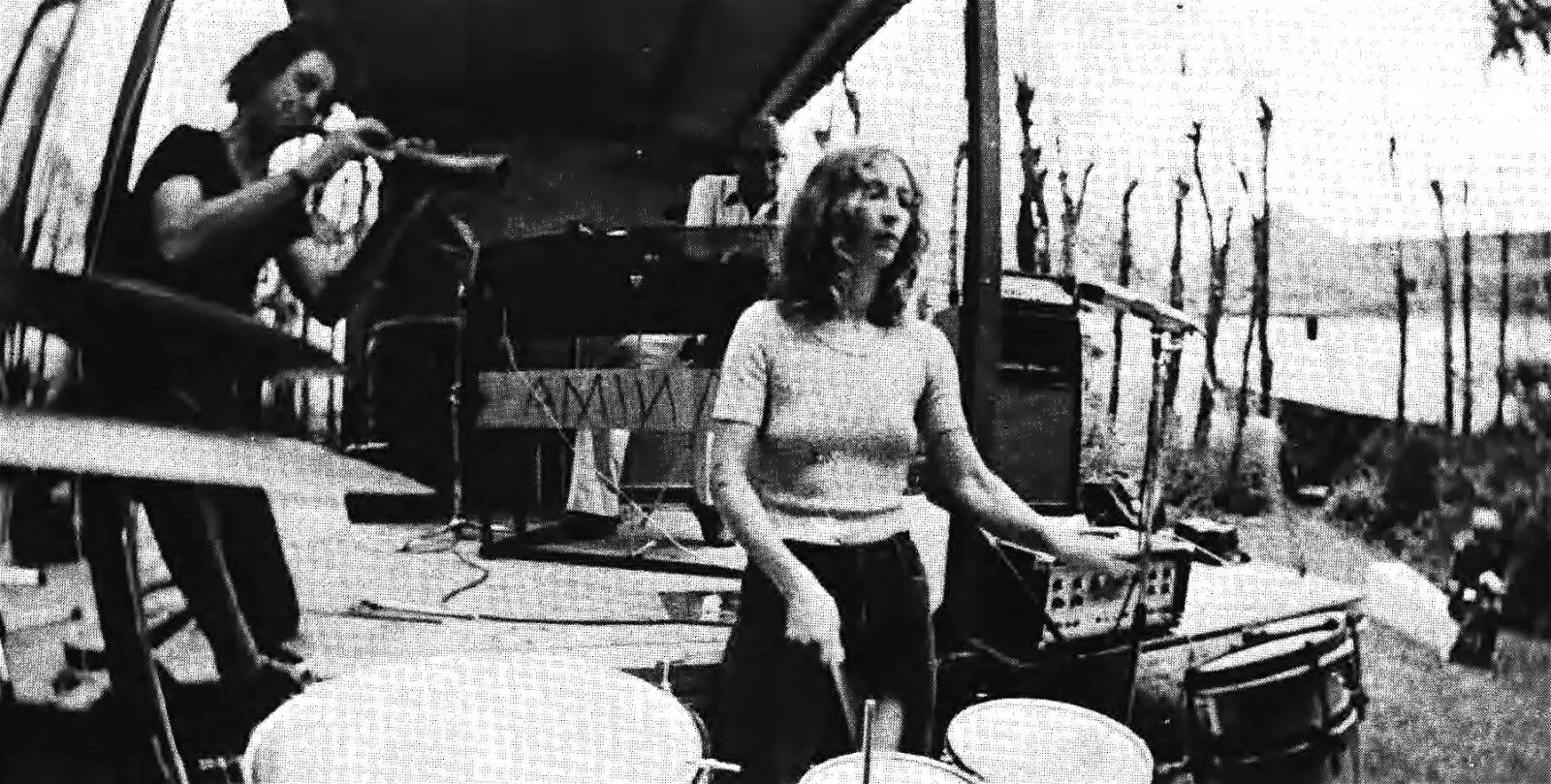
I don’t remember the favorite memories – they are in my body – I only remember the worst adventures! Especially the hammering of people on the wooden door – this sound I will never forget! For example, when we had an interview at WDR Cologne on the parking place – “what do you do here?”. Or in Dusseldorf before the Studio. We had a roady then, who had also a dog, and so both dogs were lying on the floor of the studio. Suddenly we heard ringing on the door and there were two policemen. They said they were called, because outside in the wooden wagon there is a dog who is frightening the passengers!! We showed them the dog, that was lying friendly on the carpet. But, perhaps, before, people were tapping on the box of the dog, and so he got frightened and possibly barked! But in general I managed all situations and Paul and especially the children really enjoyed the tour. For me, I liked best, that we could travel with the newly bought Ford from Cologne to stay a whole week at the Gulda Festival in Ossiach with the kids, roady and the dogs in a good hotel! This tour was Paul’s idea. I had in my garden ten fresh salads –it was May! – and I had to put them in cases with earth on top of the wagon.
Whose idea was to film your traveling? (Anima-Sound: Mit 20 km/h durch Europa was the result)
We asked all German TV stations and SWR Helga Tiedemann took our proposal – with dog and sheep!
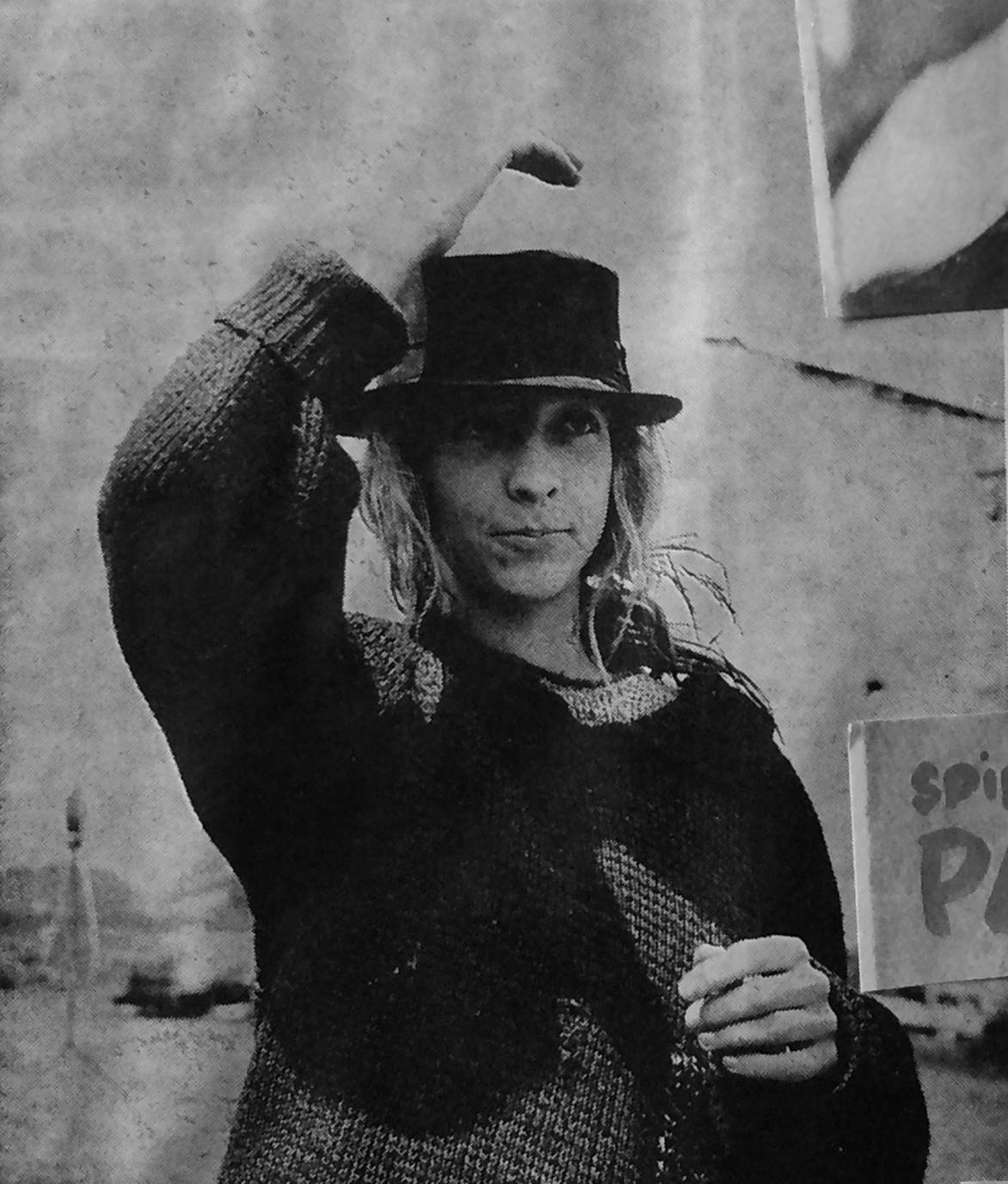
Anima was active for many years and there must be a lot of recordings. In the late 1980s you started theatre work and didn’t completely agree where the project is going.
Yes, Paul managed the whole projects and it was difficult to have a verbal understanding – until this time, all was nonverbal understanding – and I realized, that I am living to make music in my own way and despite of the security of family living, I had to find a separate life, going back to Germany with the 12 years old Lina. She wanted to go to school – the boys were already on their own and developed their own life – and step by step I learned to be independent.
“For me it was really necessary to leave traditional music behind.”
How would you compare your older material to the latest projects?
I have now much more time to do music! In 1974 when we invited the musicians from the Anima project of Friedrich Gulda in Salzburger Land, Albert Mangelsdorff, when he saw me, what I have to do with the family, the garden, the sheep, bread making, cooking for six persons every day – my mother in law also lived in Peterskirchen, – he suddenly asked me: “Wann übst du?” (when do you practice music?).
I practice nearly every day when I am at home, and so my skills increased – especially my string playing. I cannot listen to my former violin playing! And I am playing with other musicians, professional ones. We make scores, not written notes, but sequences, when using instruments, time notes…For me it was really necessary to leave traditional music behind and go away from the extreme material with Paul to be opened to the very simple possibility of sounds, that are also interesting. And it also began with him quitting amplification on stage. I only use technique of multi tracking, Korg synthesizer – only for studio work.
You also worked with some very well known musicians such as Friedrich Gulda, Hans Rettenbacher, Theo Jörgensmann and Albert Mangelsdorff.
I would go ahead, because it was so long ago! Not so well known ones are: Peter Strickmann, Zoro Babel (my musician son), Michael Ross, Christoph Reiserer, Werner Klausnitzer, Pit Holzapfel, Rita Fichter, Julia Schölzel, Evan Parker, Hans Wolf, Marlene Noichl, Elmar Guantes, Anja Lechner, bTian, Raithel, Gundis Stalleicher, Timo van Lujik, Bunte Truppe…releasing my next LP with Ruth-Maria Adam, Ronnie Oliveras, Ignaz Schick.
“Improvisation means: “To do the right sound in the right moment!””
What would you say is the main difference in being a solo artist?
You have the most freedom what to play. Because improvisation means: “To do the right sound in the right moment!”
Did influences change during all these years of being an artist?
I mostly listen to the sounds of my instruments – to go deeper and deeper in listening. And when I am in festivals, I listen to the other concerts, sometimes interesting, sometimes surprising, often too loud. Influencing are the musicians, I play with.
Walker Street 55 is one of your latest project, released by Des Astres d’Or.
I was invited by Blanc Forms to play in Prismatic Park NY. Four times solo and workshops and the next week I could do a solo concert in Artists Space, 55 Walker Street. Playing a week in the open air, with the traffic noise and people around, I could play strong and soft in change…I really enjoyed the space and the audience!
You’re still very active. What are some other projects. You’re also running workshops?
Yes, mostly when I am invited solo I do workshops, because people like my instruments, and mostly – as the pendulum strings, you can play immediately. I only tell them not to overwhelm the manual skill, play as you can play, especially the drums or lithophone, and listen to the others. In summer I will practice again the Korg synthesizer and install in my big upper atelier four pendulum strings. Christoph Heemann wants me to do an LP with Korg – and reissue VIA – and only pendulum strings.
Thank you. Last word is yours.
Hopefully, you can accept my thoughts.
– Klemen Breznikar
Third LP by Anima Sound, with original material from 1979 is available via Des Astres d’Or. Amazing original artwork (each LP different artwork!) by Limpe Fuchs.
Small independent label play loud! is re-releasing the entire catalogue and many old & new recordings by Anima | Limpe Fuchs.
All photos provided by Limpe Fuchs. Anyone who claims copyright of one of the pictures used should get in touch via email.

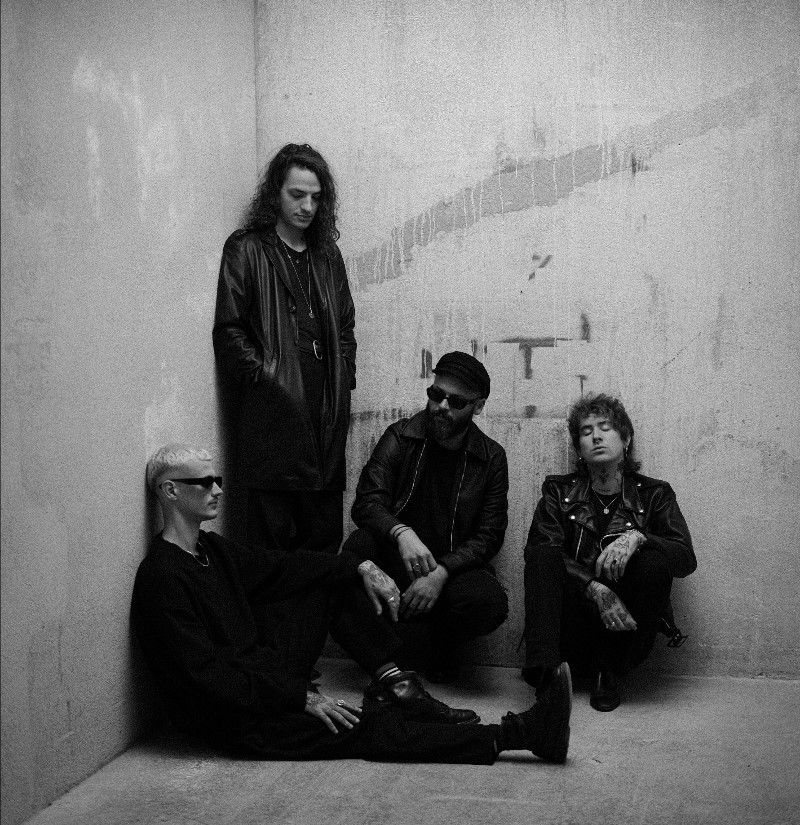
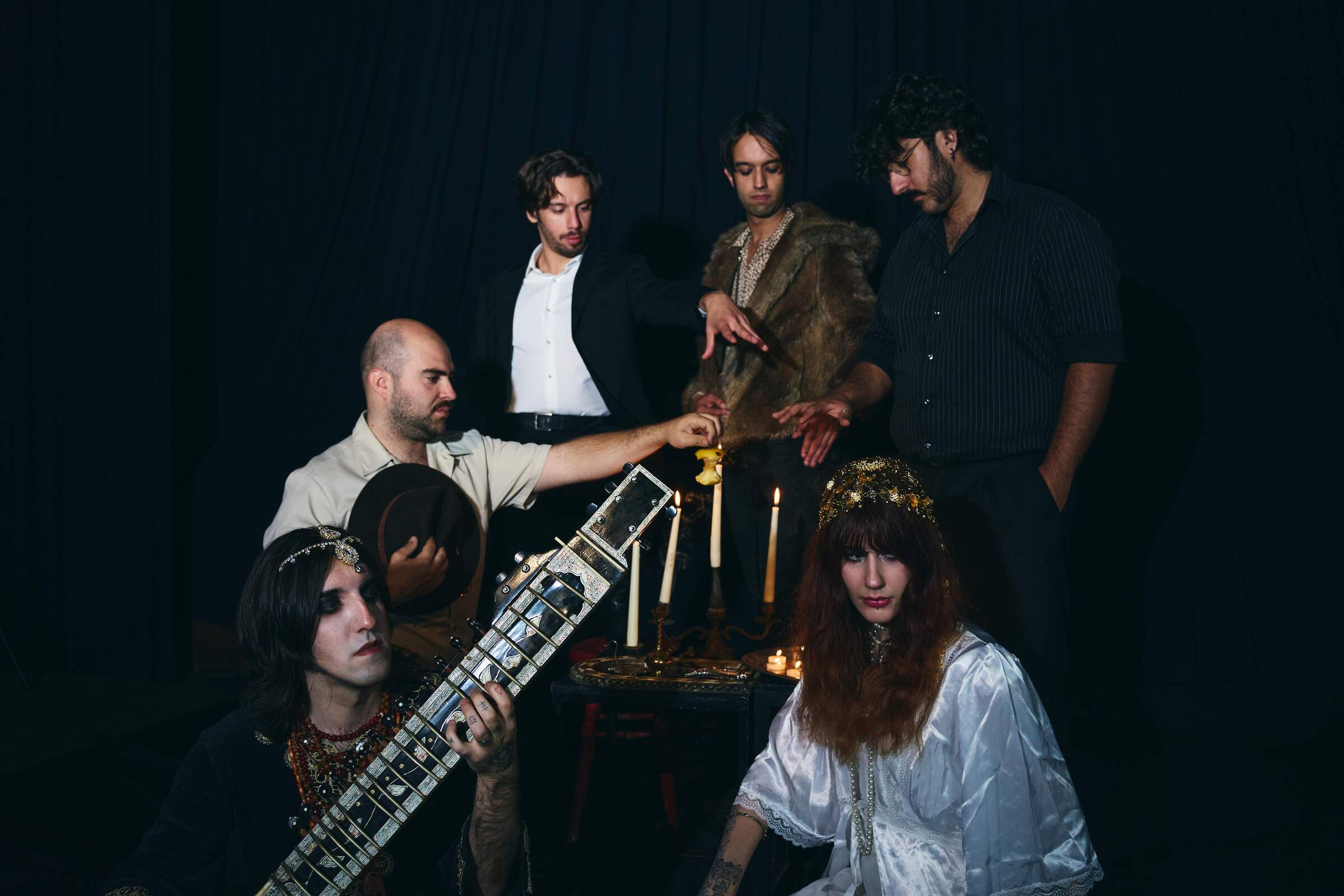
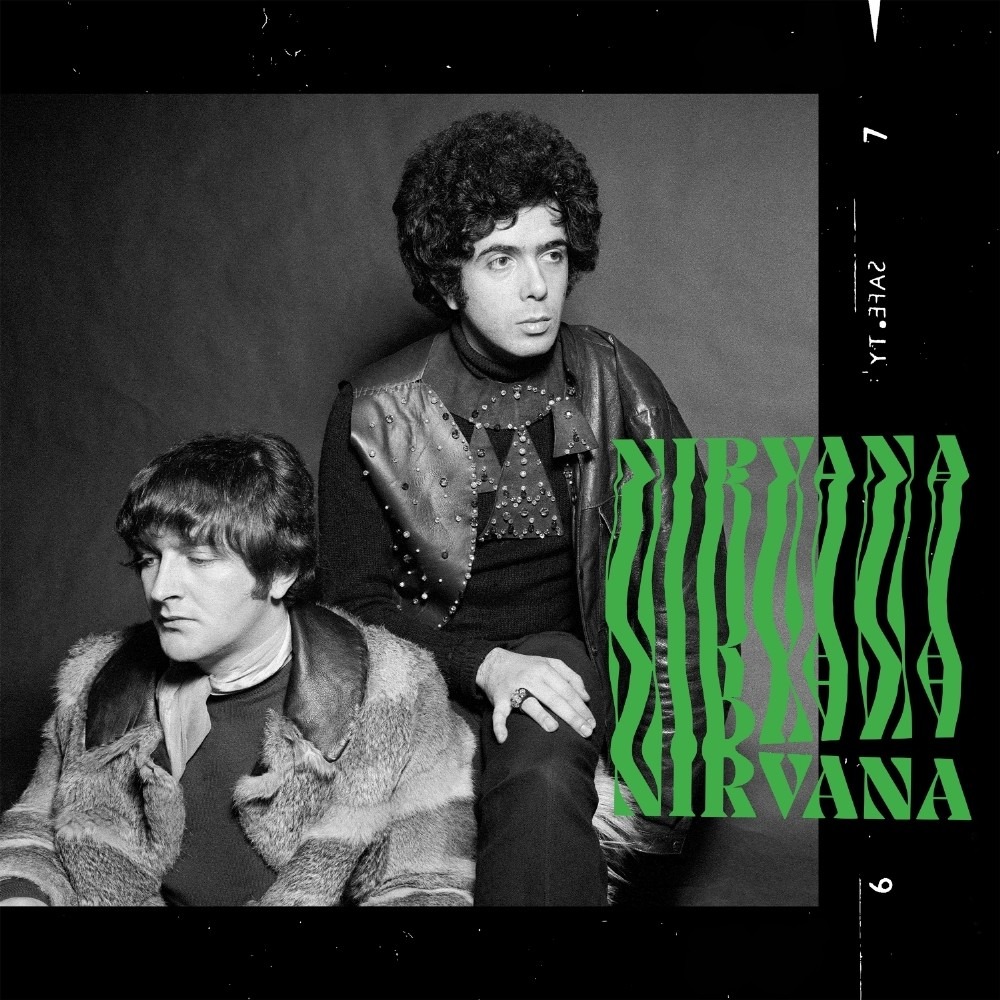
Maybe you could mention the effort by the small independent label play loud! to re-release the entire back-up catalogue and many old & new recordings by ANIMA/LIMPE FUCHS: https://www.playloud.org/limpefuchs.html